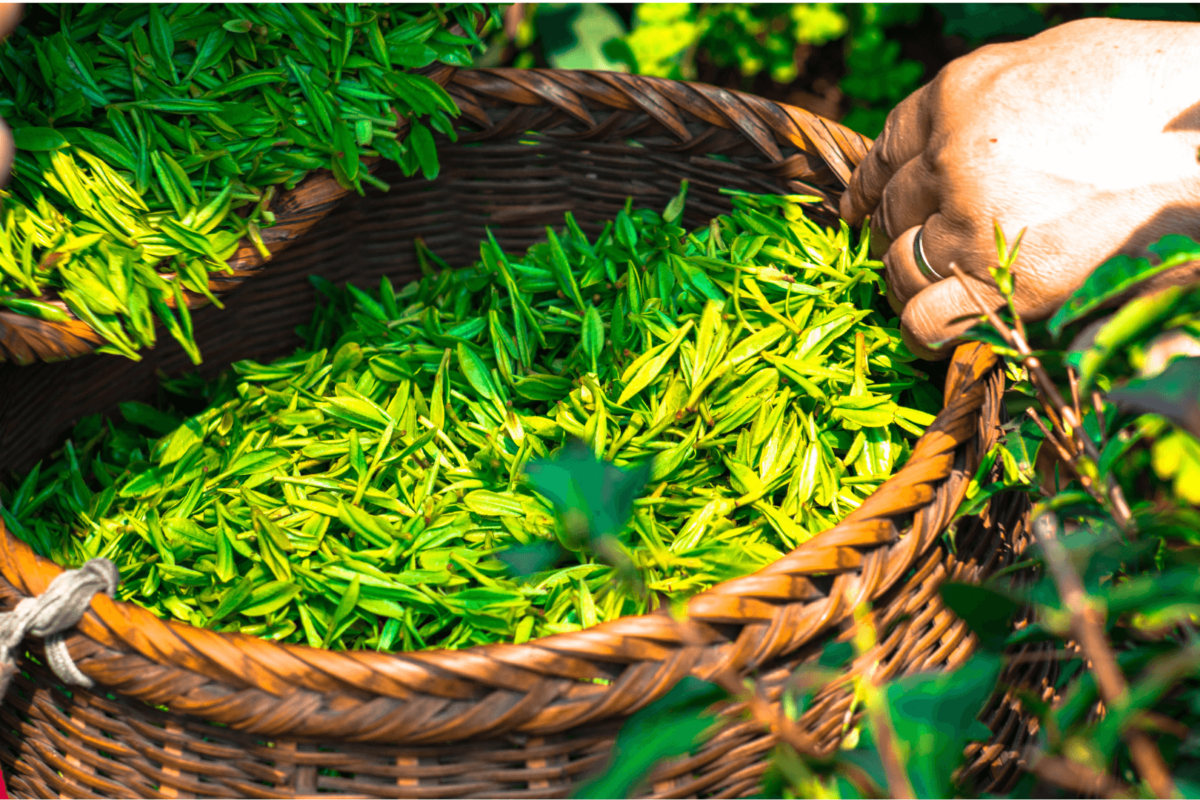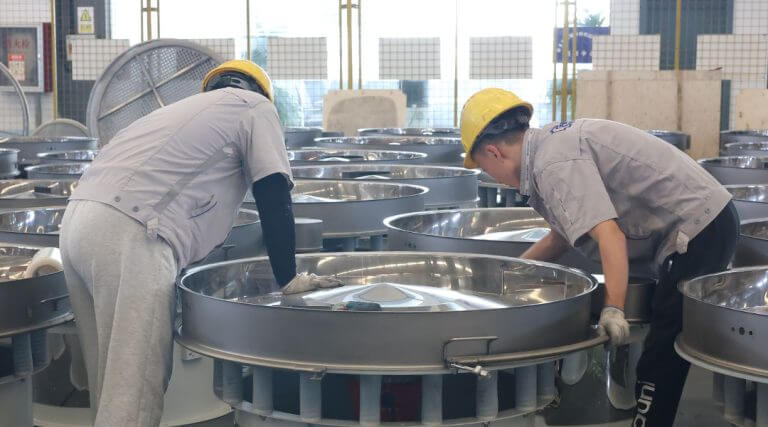Tea production in Malaysia continues to grow, with both local and international markets demanding high-quality tea products. To maintain consistency, purity, and efficiency in tea processing, manufacturers must adopt modern commercial sieve machines. These machines play a crucial role in ensuring that tea leaves are properly graded, foreign particles are removed, and the final product meets industry standards. Among the various sieving technologies available, vibrating screens stand out for their precision and efficiency. This article explores the sieve analysis process, the working principle of vibrating screens, and how these machines enhance tea production.
1. Understanding the Sieve Analysis Process in Tea Production
Sieve analysis is a fundamental process in tea production, crucial for ensuring the quality and consistency of the final product. It involves separating tea leaves based on size and shape, which directly influences the flavor, aroma, and overall consumer experience.
a. Importance of Particle Size Distribution
The particle size distribution of tea leaves affects various aspects of tea production:
- Flavor Extraction: Uniform particle sizes ensure consistent extraction rates during brewing, leading to a balanced flavor profile.
- Aroma Development: Proper sizing allows for optimal oxidation and fermentation, enhancing the tea’s aromatic compounds.
- Product Consistency: Maintaining uniformity in particle size ensures that each batch meets quality standards, fostering consumer trust and brand loyalty.

b. Steps Involved in Sieve Analysis
The sieve analysis process typically includes:
- Sampling: Collecting a representative sample of tea leaves to be analyzed.
- Sieving: Passing the sample through a series of sieves with decreasing mesh sizes to separate particles.
- Weighing: Measuring the amount of tea retained on each sieve to determine the distribution of particle sizes.
- Analysis: Interpreting the data to assess the quality and uniformity of the tea leaves.
c. Equipment Used in Sieve Analysis
Modern tea production utilizes advanced sieving equipment to enhance efficiency and accuracy:
- Vibrating Screens: These machines use vibratory motion to facilitate the separation of tea particles based on size. The vibration ensures that particles pass through the appropriate mesh openings, resulting in precise grading.
- Linear Vibrating Screens: Designed to handle large capacities, these screens move tea leaves in a linear motion, providing efficient separation and grading.
- Vibro Sifters: Compact and versatile, vibro sifters are used for fine screening and can handle various tea types, ensuring high-quality output.
2. How Vibrating Screens Improve Tea Processing Efficiency
Vibrating screens play a pivotal role in modern tea processing, offering numerous benefits that enhance both efficiency and product quality.
a. Working Principle of Vibrating Screens
Understanding the mechanics of vibrating screens is essential:
- Vibration Mechanism: Vibrating screens operate by using a motor to generate vibratory motion. This motion causes the tea leaves to move across the screen surface.
- Particle Separation: As the tea leaves move, smaller particles pass through the screen openings, while larger particles are retained and moved to the discharge end.
- Adjustability: Operators can adjust the vibration amplitude and frequency to accommodate different tea types and desired particle sizes.
b. Advantages Over Traditional Sieving Methods
Vibrating screens offer several advantages compared to manual or traditional sieving techniques:
- Increased Throughput: The automated nature of vibrating screens allows for the processing of larger quantities of tea leaves in a shorter time frame.
- Enhanced Accuracy: Consistent vibratory motion ensures precise separation of particles, leading to uniform product quality.
- Labor Efficiency: Automation reduces the need for manual intervention, decreasing labor costs and minimizing human error.
c. Impact on Product Quality
The use of vibrating screens directly influences the quality of the tea:
- Consistency: Uniform particle size distribution leads to consistent brewing characteristics, meeting consumer expectations.
- Purity: Effective removal of impurities and foreign materials ensures a clean final product, enhancing safety and taste.
- Aesthetic Appeal: Properly graded tea leaves have a visually appealing appearance, which is important for marketability.
3. Choosing the Right Sieving Machine for Tea Manufacturing
Selecting appropriate sieving equipment is crucial for optimizing tea production processes.
a. Factors to Consider
When choosing a sieving machine, manufacturers should evaluate:
- Capacity Requirements: The machine should align with the production volume to ensure efficiency.
- Tea Type: Different teas (e.g., green, black, herbal) may require specific sieving characteristics.
- Desired Particle Size: The machine must achieve the target particle size distribution for the specific tea product.
- Space Constraints: The physical footprint of the machine should fit within the production facility’s layout.

b. Types of Sieving Machines
Various sieving machines are available, each with unique features:
- Circular Vibrating Screens: Ideal for fine particle separation, these screens offer high precision and are suitable for delicate tea types.
- Linear Vibrating Screens: Suitable for larger particles and higher capacity needs, providing efficient separation.
- Ultrasonic Sieves: Utilize ultrasonic frequencies to prevent clogging and are ideal for fine powders.
c. Integration with Existing Processes
Seamless integration of the sieving machine into current production lines is essential:
- Compatibility: The new equipment should be compatible with existing machinery to ensure a smooth workflow.
- Automation: Incorporating automation can enhance efficiency and reduce manual labor.
- Maintenance: Consideration of maintenance requirements and ease of cleaning to minimize downtime.
4. Benefits of Investing in High-Quality Sieving Equipment
Investing in advanced sieving equipment yields significant advantages for tea producers.
a. Operational Efficiency
High-quality sieving machines streamline the production process:
- Speed: Faster processing times allow for increased production capacity.
- Reliability: Durable equipment reduces the
4. Benefits of Investing in High-Quality Sieving Equipment
Investing in advanced sieving equipment, such as vibrating screens, offers numerous advantages that can significantly enhance tea production processes:
a. Enhanced Screening Efficiency
Modern sieving machines, particularly vibrating screens, are designed to achieve high screening efficiency. The circular motion and adjustable parameters allow for precise separation of tea particles based on size. This efficiency ensures that the desired particle sizes are consistently achieved, leading to a uniform product quality.
b. Increased Production Capacity
The automation and continuous operation capabilities of high-quality sieving equipment enable tea producers to process larger volumes of tea leaves in shorter timeframes. This increased capacity is essential for meeting growing market demands and can lead to higher profitability.
c. Improved Product Quality
Consistent and precise sieving ensures that tea leaves are uniformly graded, which is crucial for maintaining the desired flavor, aroma, and appearance of the final product. High-quality sieving equipment minimizes the presence of fines and oversized particles, resulting in a superior tea product that meets consumer expectations.
d. Compliance with Industry Standards
Investing in advanced sieving technology helps tea producers comply with stringent industry standards and regulations. Accurate particle size distribution is often a requirement for certification and market acceptance, and high-quality sieving equipment facilitates adherence to these standards.
e. Cost Savings in the Long Term
While the initial investment in high-quality sieving equipment may be substantial, the long-term cost savings are significant. Enhanced efficiency reduces energy consumption, and the durability of advanced machines decreases maintenance and replacement costs. Additionally, improved product quality can lead to higher market prices and increased customer loyalty.
f. Environmental Benefits
Efficient sieving reduces waste generation by ensuring that only the desired tea leaf sizes are processed further. This reduction in waste contributes to more sustainable production practices and aligns with global efforts to minimize environmental impact.
g. Competitive Advantage
Adopting cutting-edge sieving technology can provide tea producers with a competitive edge in the market. The ability to consistently deliver high-quality products distinguishes a brand from its competitors and can lead to expanded market share.

h. Scalability and Flexibility
Modern sieving equipment is often designed with scalability in mind, allowing producers to adjust production levels based on demand. The flexibility to handle different tea varieties and particle sizes without significant equipment changes is a valuable asset for tea manufacturers aiming to diversify their product offerings.
i. Enhanced Worker Safety
Automation of the sieving process reduces the need for manual intervention, thereby minimizing the risk of workplace injuries. Advanced equipment often includes safety features that protect operators, contributing to a safer working environment.
j. Data Collection and Process Optimization
High-quality sieving machines equipped with digital interfaces can collect data on production parameters. This data enables producers to analyze and optimize their processes continually, leading to further improvements in efficiency and product quality.
Conclusion
Investing in high-quality sieving equipment is a strategic decision that offers multiple benefits to tea producers. From enhancing screening efficiency and product quality to providing cost savings and environmental advantages, advanced sieving technology is integral to modern tea production. By adopting such equipment, tea manufacturers can position themselves for long-term success in a competitive market.
